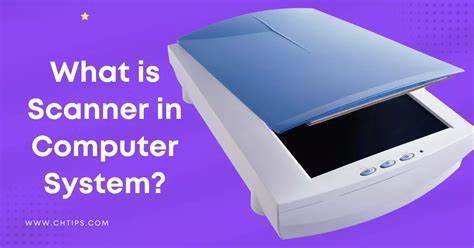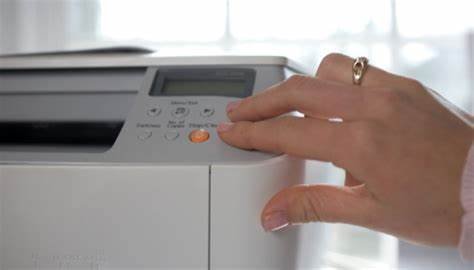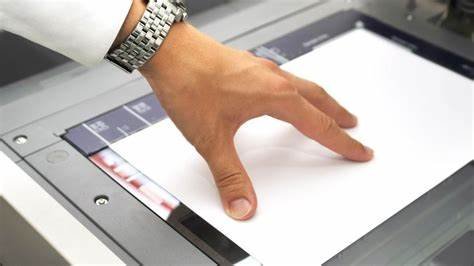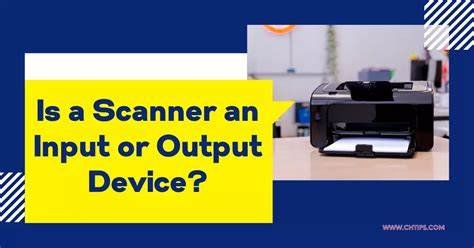In today’s tech world, output devices are important for showing and sharing information from a computer. A scanner is an important device that changes physical papers into digital form. Scanners are often used in schools, offices, and businesses by students, workers, and creative people. Have you ever thought how scanners work and why they’re important in technology? In this article, we will explore what a scanner is as an output device, how it works, the different types available, and how to choose the best one for your needs.
Table of Contents
What is a Scanner as an Output Device?
A scanner is an output device used to convert physical papers, images, or objects into digital format. It uses light technology to get specific information from the original source, like text, images, and graphics, and makes a digital copy that can be seen, saved, or changed on a computer.
Scanners are usually known as input devices because they gather information, but they can also act as exit devices sometimes. Scanners create clear digital copies of papers or images that you can view on a screen, print out, or share online. Scanners use light-sensitive sensors to scan papers, and they send the collected data to a computer or other device for later use.

How does a scanner work as an output device?
Scanners are output devices that turn scanned information into computer files. This is how the process goes:
- Scanning Process: When you put a paper or picture on the scanner’s glass, the scanner shines a light on it. The light bounces off the item and hits a sensor. The sensor gathers data and turns it into a digital picture.
- Image Capture: The scanner’s camera divides the image into small pieces called pixels. The more pixels the scanner captures, the better the picture quality. This is why sharpness is important in scanning.
- Digital Output: Once the scanner scans the image or paper, it sends the information to a computer. The computer handles the data, and you can see, save, or print it.
Also Read: Exploring Fun Computer Science Jobs: The Best Career Options in Technology
Scanners are used to make digital copies of papers, books, photos, and handwritten notes. This makes it simpler to keep, arrange, and share information online.

Types of Scanners: How to Choose the Right One for You
There are many types of scanners, and each one is made for a particular purpose. The main types of cameras are:
- Flatbed Scanners: Flatbed scanners are the most commonly used type of scanner. They have a flat area for placing the text or image. The scanner shines a light over the item to scan it. These scanners are usually used to scan papers, pictures, and small items.
- Sheet-fed Scanners: These scanners automatically pull papers into the machine for scanning. They are generally quicker than desktop scanners and can scan several pages at the same time. Sheet-fed scanners are often used in businesses to quickly scan a lot of documents.
- Handheld Scanners: Handheld scanners are portable tools that let you scan papers or images by moving the scanner over the surface. They may not be as accurate as desktop or sheet-fed scanners, but they are great for scanning small areas or for taking with you on the go.
- 3D Scanners: These special devices are used to make 3D models of things. 3D scanners are used in areas like engineering, medicine, and design to gather thorough information in three dimensions.
- Drum Scanners: Drum scanners are high-quality devices mainly used for professional shooting and archiving. They work by placing the document or image on a rotating drum while light sensors record the image. These scanners offer great quality, but they can be costly and heavy.
Why are scanners important as output devices?
Scanners are useful output devices with many applications and advantages. Here’s why they matter:
- Document Digitisation: Scanners turn physical papers into digital files, which makes it simple to keep, share, and organise them. Digital documents are easier to find, look through, and change than hard documents.
- Keeping Information Safe: Scanning papers or photos helps keep important information safe. Scanning old books, photos, or records ensures that they are not lost to time and can be stored in digital archives for future use.
- Better Accessibility: Digital documents make it simpler for students, teachers, and professionals to read, update, and share information. Digital papers can be shared between devices, which makes working together easier.
- Increased Efficiency: Scanners help save time by turning lots of paper documents into digital files. With the ability to scan multiple pages or even entire books quickly, they allow people to work more efficiently and reduce the time spent on manual paperwork.

Key Features to Consider When Choosing a Scanner
When choosing a scanner as an output device, it’s important to keep certain features in mind to ensure you get the best one for your needs. Here are some key features to look for:
- Resolution: Resolution is a measure of how detailed the scanned image will be. It is usually measured in dots per inch (DPI). A higher DPI means higher image quality, which is important if you’re scanning photos or detailed documents. Look for scanners with at least 600 DPI for good image quality.
- Scan Speed: Scan speed refers to how quickly the scanner can scan a document. If you need to scan multiple pages, look for a scanner with a high scan speed to save time.
- Connectivity: Most scanners today connect to computers through USB or wireless connections. Some scanners also support cloud storage services, which makes it easy to store scanned files online.
- Size and Portability: Depending on your space and needs, you might want a portable handheld scanner or a larger flatbed model. Consider the amount of space you have and how often you plan to move the scanner around.
- Price: Scanners come in a range of prices, with more expensive models offering better features and higher resolution. Determine your budget and choose a scanner that meets your needs without going over budget.

Conclusion: The Importance of Scanners as Output Devices in Modern Life
In conclusion, scanners play an essential role as output devices in both personal and professional settings. They are key for converting physical documents into digital format, helping to improve productivity, preserve information, and make digital sharing easier. Scanners are used for a variety of tasks, from scanning photos and books to creating digital copies of important documents. Understanding the features of scanners and how they work will help users select the best one for their needs.
By understanding the various features and types of scanners as output devices, users can make informed decisions when selecting a scanner for their needs. Whether it’s for personal use, business, or academic purposes, a good scanner can help improve efficiency, make information more accessible, and ensure that valuable documents are preserved digitally.
Frequently Asked Questions
- What is a scanner as an output device?
A scanner is an output device that converts physical documents or images into digital form that can be stored, viewed, or shared electronically. - How do scanners work?
Scanners use light to capture images from documents, converting them into digital formats. The data is then sent to a computer, where it can be stored or edited. - What are the different types of scanners?
The different types of scanners include flatbed scanners, sheet-fed scanners, handheld scanners, 3D scanners, and drum scanners. - Why do I need a scanner?
Scanners allow you to digitize physical documents, making it easier to store, organize, and share information. They also help preserve documents by creating digital copies. - What features should I look for in a scanner?
Important features to consider include resolution (DPI), scan speed, connectivity options, size and portability, and price.

